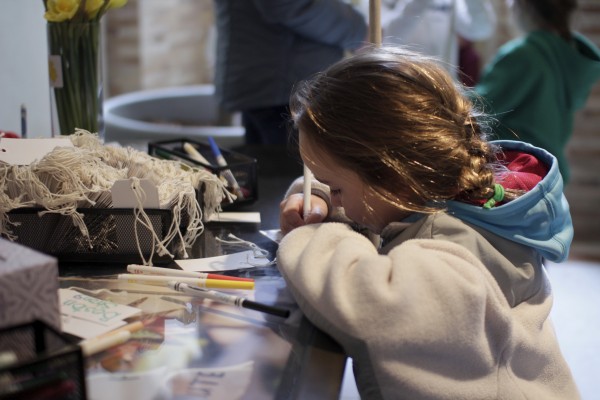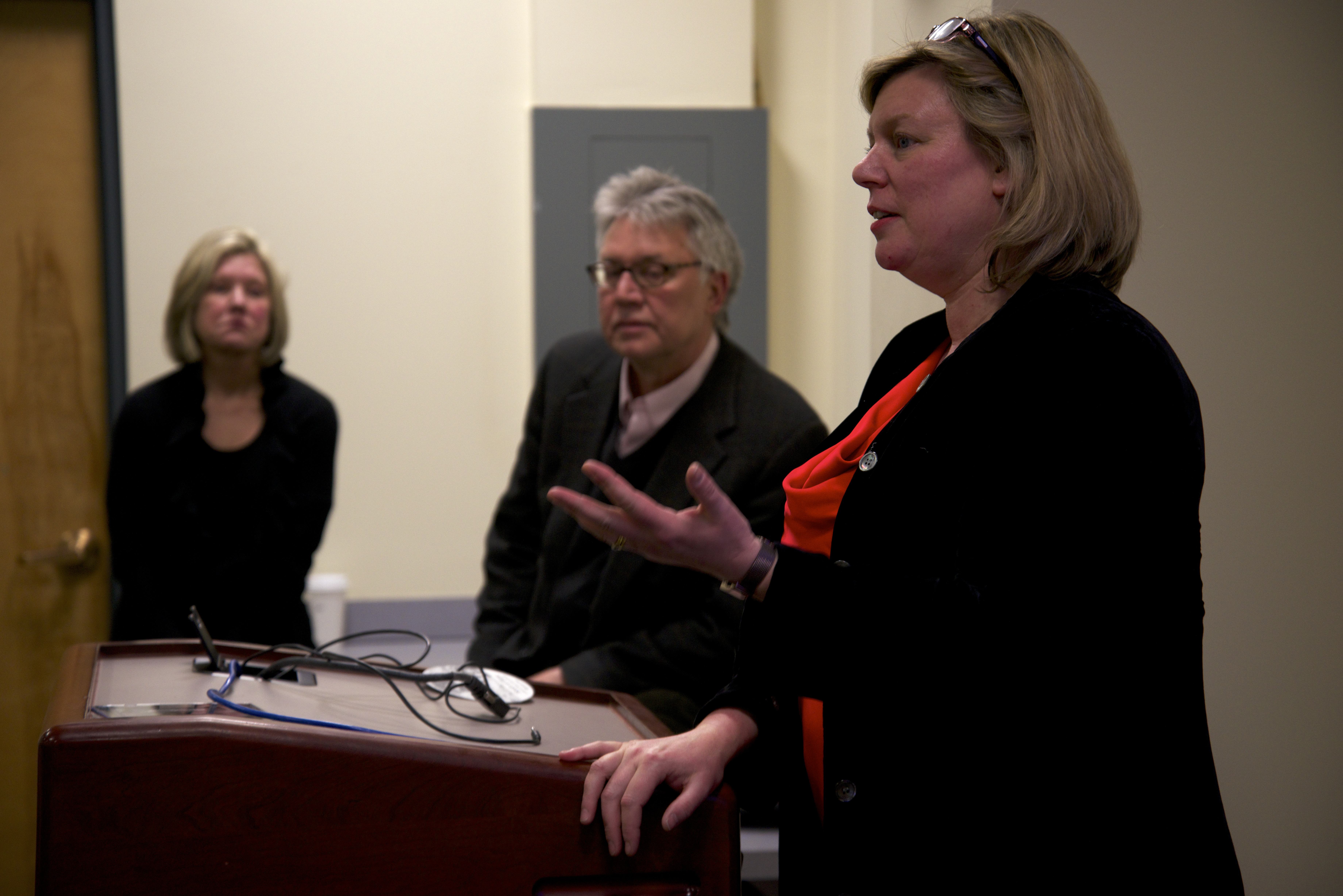Dear Boston: Messages from the Marathon Memorial

By Nicolette Overton
BU News Service
The McKim Exhibit Hall is nearly full, but quiet, even for a library. Couples walk hand in hand, mothers quietly answer their children’s questions and some people wipe away tears. They are all here to see the Dear Boston: Messages from the Marathon Memorial exhibition, organized to honor the one-year anniversary of the 2013 Boston Marathon.
“We are remembering what happened last year,” Cassie Leventhal, 26, said, who ran track and field at Northeastern University and now lives in New York City.
She is running the Boston Marathon this year.
“It’s cathartic,” Johnny Leo, 39, an art dealer with Fountain Art Fair in New York City said. He came to the exhibition with Leventhal.
“We came to pay our respects,” Leventhal said.
Rainey Tisdale curated Dear Boston using the items left in memoriam after the Boston Marathon bombing last year.
“Very shortly, the day after, police blocked off Boylston and people started leaving things at the barricades,” Marta Crilly said on the phone, an archivist for reference and outreach at the City of Boston Archives.
Crilly said when the police removed the barricades, city workers moved most of the items into Copley Square. At that time, fragile items were taken to the Mayor’s office.
“They contacted us and said, ‘We have these items, they need to be saved. Can you help us?’” Crilly said.
About two weeks after the Boston Marathon, the archives received the initial set of paper items from the Mayor’s office.
Items left at the barricades and in Copley Square include running shoes, paper signs, flags from countries around the world, flowers, sports jerseys, sunglasses, hats, and stuffed animals all with words of encouragement, love and solidarity.

Leventhal said that trying to make everyone happy without starting controversy was the hardest part in creating a memorial exhibit.
“Representatives of different cultural institutions were involved in strategies for public access and saving the items,” Crilly said.
The exhibition showcases most of these items in Plexiglas cases. The exhibit’s centerpiece is a dais with a quilt-like arrangement of running shoes.
The placard states: “Running shoes were what distinguished the Boston Marathon bombing’s makeshift memorial from those commemorating other American tragedies. Hundreds of runners left their shoes – a clear symbol of their identity as runners- at Copley Square.”

Dear Boston has enlarged photographs of the memorial site, which act as dividers for the sections of the exhibit. There is also a slideshow of photographs that plays on repeat.
Next to the viewing area for the slideshow are three potted trees covered in small white tags with messages written in bright-colored markers. Visitors can write messages and hang them on the trees or sign a guestbook on the way out.
“I thought leaving messages was therapeutic,” Leventhal said. “We could only witness from a distance last year. We all wanted to jump in a car and take Highway 84 up here.”

Leventhal has run other marathons, but this is her first time running the Boston Marathon.
“It was my grandfather’s dying wish that I run in Boston,” Leventhal said. She is running for Dana-Farber Cancer Institue.
Leventhal just missed the cut-off for qualifying times for her age group, but she said she was going to run for Dana-Farber Marathon Challenge team anyway. She has had five family members treated there and her uncle is there now.
“Boston’s the Holy Grail of running,” Leventhal said. Her bib number is 26213 and she is running in wave three, corral nine, which starts at 11 a.m.
Crilly said that many items that were not on display at the Dear Boston exhibit are being digitized. To see these items and get more information go to http://marathon.neu.edu/bca.
The Dear Boston exhibition is open through Sunday, May 11 during library hours in the McKim Exhibit Hall at the Central branch of the Boston Public Library.








